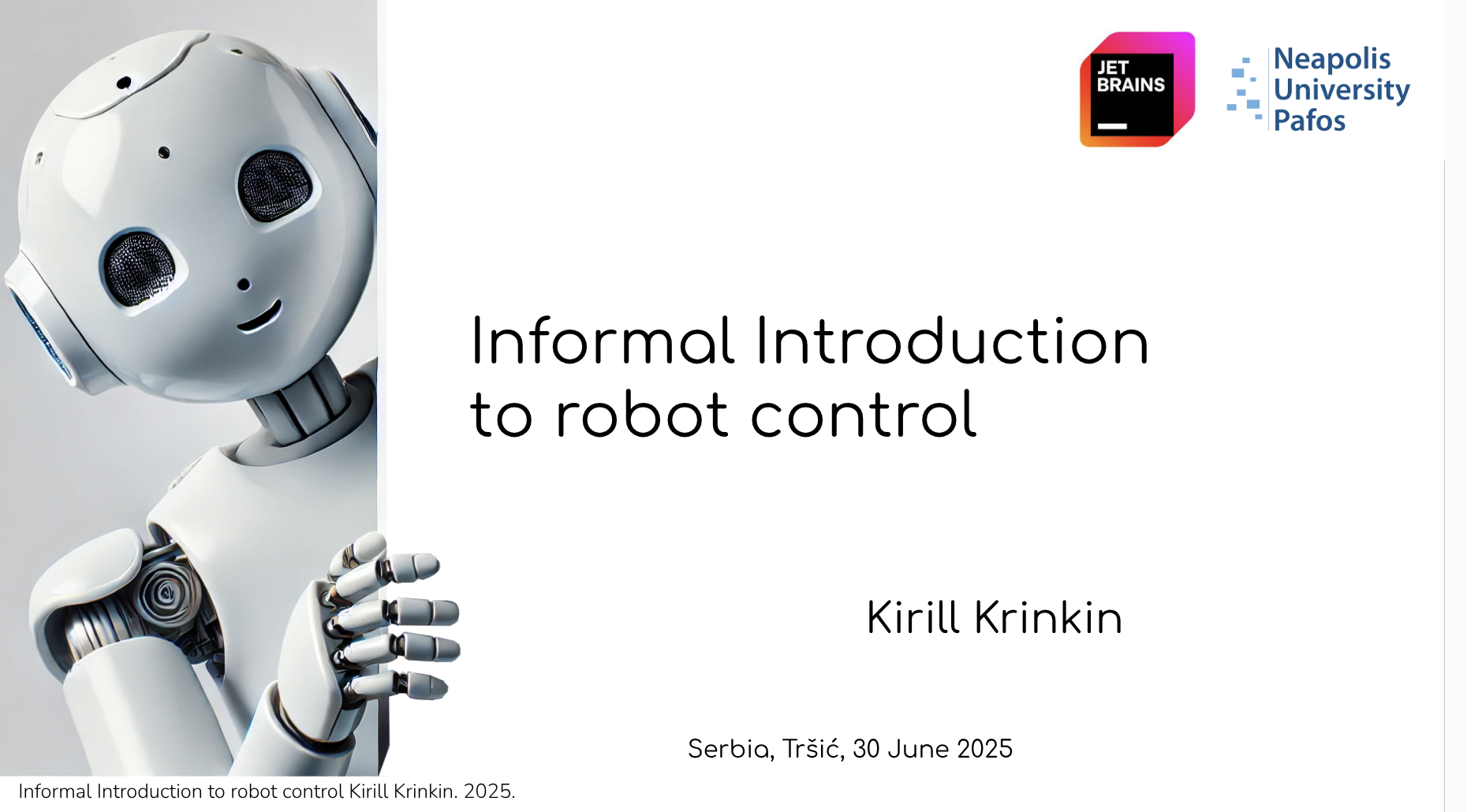How Robots Learn Not to Fall: A Simple Introduction to Robot Control

Imagine you’re riding a bicycle trying to maintain balance. Your brain constantly analyzes which way you’re leaning and corrects your hand and body movements. Robot control works similarly — except instead of your brain, mathematical algorithms do the job.
Why Are Robots So Clumsy?
If you’ve ever watched Boston Dynamics robot videos, you’ve noticed that even the most advanced robots sometimes stumble over simple obstacles. The thing is, the real world is full of uncertainty:
- Sensors provide inaccurate data (like poor vision)
- Surfaces can be slippery or uneven
- Wind might blow at an unexpected moment
The Four Main Characters of Robotics
Any robot control system has four key components:
🧠 Controller — the “brain” that makes decisions
🦾 Actuators — the “muscles” (motors that move the robot)
🤖 Plant — the robot or system being controlled
👁️ Sensors — the “senses” (cameras, sensors, encoders)
Blind Driving vs Driving with Eyes
There are two fundamentally different control approaches:
Open-Loop Control — like driving with closed eyes on a memorized route. Simple, but if something goes wrong, the robot can’t fix it.
Closed-Loop Control — like normal driving with constant corrections. The robot measures what’s happening, compares it with the desired result, and fixes errors.
PID: The Magic Formula of Robotics
The most popular control algorithm is called a PID controller. It works like an experienced driver:
- P (Proportional): the bigger the error, the stronger the correction
- I (Integral): accounts for accumulated past errors
- D (Derivative): predicts future errors based on rate of change
Imagine you’re parking: if you’re far from the curb (big error), you approach quickly. If you’re close, you move slowly and carefully. If you consistently undershoot, you account for that next time.
Key Takeaways
✅ Robot control is a constant battle against uncertainty
✅ Feedback is critically important — robots must “see” the results of their actions
✅ PID controllers are simple but powerful tools used everywhere from drones to autopilots
✅ Parameter balancing is an art: speed vs stability, accuracy vs smoothness
Try It Yourself!
The lecture includes a link to an interactive PID controller simulator. Try adjusting the parameters and see how the robot responds to changes!
Want to dive deeper into the theory and see more examples?
👉 Check out the full lecture slides — complete with mathematical formulas, diagrams, and even QR codes with additional materials!
P.S. We always say: “The real world is real” — and that’s exactly why robot control is such a fascinating and challenging problem.